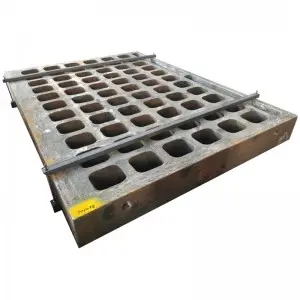In the realm of industrial manufacturing and material processing, the concept of a reject door might not immediately capture the imagination. However, for those involved in the intricate processes of sorting, screening, and handling broken or substandard parts, the reject door is a crucial component that can significantly impact efficiency and quality control. This blog post will explore the importance of reject doors, their functionality, and how they contribute to the overall effectiveness of industrial operations.
Understanding the Reject Door
A reject door is a specialized mechanism used in various industrial processes to separate and divert unwanted or substandard materials from the main production flow. These doors are typically installed in sorting machines, conveyors, and screening systems to ensure that only materials meeting specific criteria continue down the production line. The reject door’s primary function is to identify and remove items that do not meet the required standards, thereby maintaining the quality and consistency of the final product.
Enhancing Quality Control
One of the most significant advantages of using reject doors is their role in enhancing quality control. In industries where precision and consistency are paramount, such as automotive, aerospace, and electronics manufacturing, the presence of even a single defective part can have far-reaching consequences. Reject doors help prevent these defective parts from entering the final assembly or packaging stages by identifying and diverting them at an early stage. This not only ensures that the end product meets the highest standards but also reduces the risk of costly recalls and customer dissatisfaction.
Improving Operational Efficiency
Reject doors contribute to operational efficiency by streamlining the sorting and screening processes. By automatically identifying and removing substandard materials, these doors reduce the need for manual inspection and intervention. This automation not only saves time but also minimizes the risk of human error, leading to a more consistent and reliable production process. Additionally, the removal of unwanted materials helps maintain the optimal performance of downstream equipment, reducing wear and tear and extending the lifespan of machinery.
Customization and Flexibility
One of the key features of reject doors is their ability to be customized to meet specific industrial needs. Depending on the application, reject doors can be designed to sort materials based on size, shape, weight, or other characteristics. For example, in a recycling facility, a reject door might be used to separate different types of plastics or metals based on their density. In a food processing plant, it could be used to remove foreign objects or substandard products from the production line. This flexibility allows manufacturers to tailor their reject door systems to the unique requirements of their operations, ensuring maximum efficiency and effectiveness.
Reducing Waste and Environmental Impact
In addition to improving quality control and operational efficiency, reject doors also play a role in reducing waste and minimizing environmental impact. By identifying and diverting substandard materials early in the production process, these doors help ensure that only the highest quality materials are used, reducing the amount of waste generated. This not only benefits the environment but also helps manufacturers comply with increasingly stringent environmental regulations. Furthermore, the ability to separate and recycle rejected materials can lead to cost savings and a more sustainable production process.
Safety and Compliance
In many industries, safety and compliance are critical considerations. Reject doors can help manufacturers meet these requirements by ensuring that only materials that meet specific safety standards are used in the production process. For example, in the pharmaceutical industry, the presence of even a small amount of contaminated material can pose a significant health risk. Reject doors can help prevent such contamination by identifying and removing any materials that do not meet the required safety standards. This not only protects consumers but also helps manufacturers avoid costly legal issues and damage to their reputation.
Conclusion
The reject door, while perhaps not the most glamorous component in the world of industrial manufacturing, plays a crucial role in ensuring quality, efficiency, and safety. By automatically identifying and diverting substandard materials, reject doors help maintain the highest standards of production, reduce waste, and minimize environmental impact. For international wholesale purchasers and procurement professionals, investing in high-quality reject door systems can lead to significant operational improvements and cost savings. By understanding the importance of reject doors and incorporating them.

Post time: Jun-30-2025
